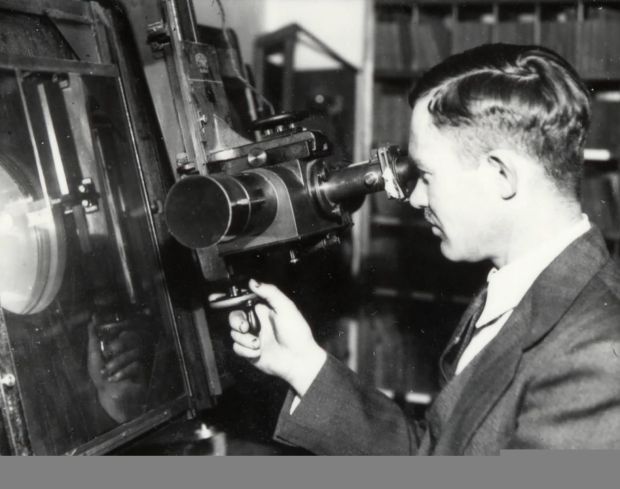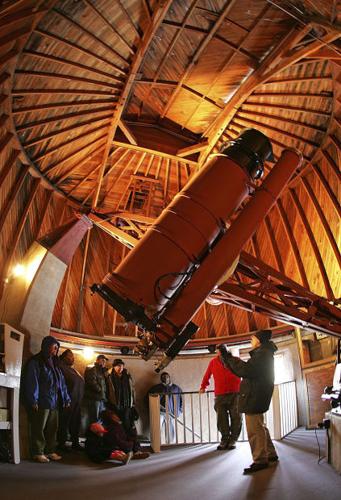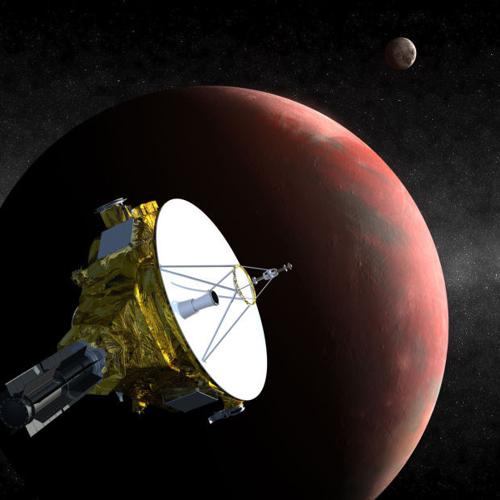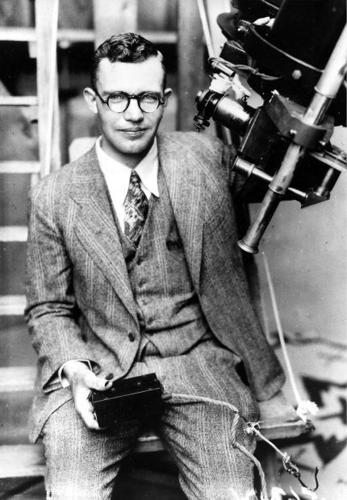An ounce of Clyde Tombaugh’s cremated remains are aboard NASA’s New Horizons spacecraft, now on the final leg of its 10-year, 3-billion-mile space odyssey to Pluto.
By late June, we’ll be seeing the first clear images of the planet Tombaugh discovered 85 years ago on Feb. 18 from Lowell Observatory in Flagstaff.
At its closest approach on July 14, New Horizons’ camera will be able to resolve features as small as a Central Park pond, according to Alan Stern, who is leading the NASA mission.
In the days and weeks preceding that, the mission team will attempt to image global surface maps of the planet, which takes 6.5 days to complete a rotation.
“We’re going to be seeing a new world in all its glory,” said astronomer Marc Buie, who has spent most of his career studying Pluto and is a member of the New Horizons science team. Buie and Stern are affiliated with the Southwest Research Institute in Boulder, Colorado, where the science team is headquartered.
The NASA mission is being run by Johns Hopkins University Applied Physics Laboratory.
In Flagstaff, Lowell Observatory has proclaimed the “Year of Pluto” and planned a series of celebrations, beginning with a visit Feb. 21 from mission leader Stern, who said in Tucson recently that he expects to find that Pluto has even more moons than the five already discovered.
He predicts its surface features will make it seem more planet and less dwarf, and possibly end the debate over its reclassification.
Stern will speak at Flagstaff’s historic Orpheum Theater, where Tombaugh, according to his diaries, watched the movie “The Virginian” on the night before his big discovery, said Josh Bangle of Lowell Observatory.
Feb. 4, by the way, would have been Clyde Tombaugh’s 109th birthday.
If you’re in Flagstaff, you can celebrate with a “Pluto” roll at Karma Sushi, located in a building that, in 1930, was called the Black Cat Cafe. It is where Tombaugh walked for lunch after his discovery.
“We are very, very, very excited,” Bangle said. “It is such a huge part of our history. It has generated a nice, healthy interest in science and a buzz in Flagstaff,” he said.
Nobody is more excited than Buie, who said he was “first bitten by the Pluto bug” as a graduate student in planetary science at the University of Arizona in the early ’80s.
“It was the call of the unknown — exploring territory people hadn’t gotten into yet. I knew there was a very good chance we could have a mission going to Pluto. It’s an interesting place, very different from anything else we’ve seen.”
Scientists have learned a lot about Pluto from the ground, but one thing Buie wants to pin down is its precise size.
Pluto, when it was first discovered, was thought to be the size of Earth, but soon became the incredible shrinking planet. It is now estimated to be about two-thirds the size of Earth’s moon. Buie expects the new measurement will be close to the current estimate of 2,320 miles in diameter.
He also wants to see what it looks like, whether it has dunes or other wind-driven features. “Does it have craters? Does it have geology? You can get that in an instant glance.”
New Horizons will not orbit Pluto but will whiz by at a speed of 27,000 mph. The spacecraft’s cameras will use image stabilization techniques and lots of short exposures, Buie said.
Decades of preparation will pay off, Buie said. Pluto’s array of scientific instruments are prepared to use that short window of opportunity to answer an array of scientific questions about Pluto and its companion moon, Charon.
The visual payoff will be the first clear pictures of the last planet to be visited by NASA.
Before now, Pluto has been a dim point of light — widened a bit to a fuzzy pattern of features in images from NASA’s Hubble Space Telescope, directed by Stern and Buie, along with Laurence Trafton.
Pluto will be in the closest part of its orbit when New Horizons arrives, but still 31 times the distance from Earth to the sun.
That makes Tombaugh’s discovery 85 years ago all that more amazing.
He was working with photographic plates and a machine called a “blink comparator” that allowed him to toggle between two images at a time, watching for a faint, moving object.
His reward was becoming the third person to discover a planet and the only one to do so from American soil — from Percival Lowell’s observatory on Mars Hill, just a lunchtime stroll from downtown Flagstaff.
It’s the place to be this summer, said Buie, who previously worked at Lowell Observatory.
“I’d be there myself if I didn’t have something even more exciting to do.”
Buie is a member of the hazards team for New Horizons. He’ll be at mission control at Johns Hopkins, making sure the spacecraft doesn’t run into anything before it reaches its goal.







